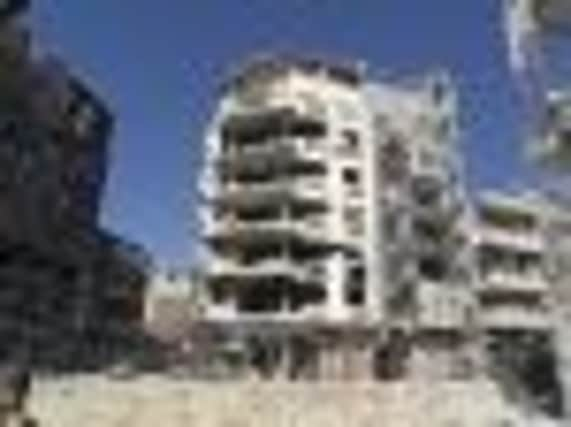Life in ruins as flowers bloom in Homs


On a 10-minute drive through Baba Amr district on Thursday this week, as journalists accompanied United Nations truce observers, two elderly women were the only people to be seen. Buildings along the main street and nearby alleys were destroyed in the bombardment by the Syrian army.
Homs, Syria’s third-largest city, is an important industrial centre straddling the main north-south highway, near the border with Lebanon.
Advertisement
Hide AdAdvertisement
Hide AdThe city and surrounding province have borne the heaviest loss of life in the 14-month-old uprising against Assad and tens of thousands of people have been displaced.
In Inshaat neighbourhood, a woman said she had returned to the area last week with her family because they could not rely indefinitely on others to look after them.
“What else can we do? The destruction is huge but we cannot continue living in other people’s houses,” she said.
A soldier at a nearby checkpoint, brought in from the eastern city of Deir al-Zor to help the crackdown on dissent, said he was taken aback when he arrived in Homs a month ago.
“I was surprised to see all this destruction. I felt bad for the country and my people,” he said. “But this is all because of the gunmen,” he said, echoing the government accusation that the uprising is a foreign-backed militant campaign.
“Your revolution is my arse,” said less sympathetic graffiti scrawled on one of the walls. In Baba Amr, taunts on the walls in the rebel district praised the president – “We love you Bashar”, “Assad for ever”, and “We sacrifice ourselves for you”.
Homs has areas of calm, however. Majority Sunni Muslims, who make up most of the protesters and the majority of rebels, say the districts which house Alawites – from the same sect as Assad’s family – have enjoyed army protection while the rest of the city was bombarded.
In Hamra district, home to the governor’s residence, houses were untouched and trees and flowers line the streets.
Advertisement
Hide AdAdvertisement
Hide AdThe presence of the monitors, who are supposed to be overseeing a ceasefire leading to talks and a political solution to Syria’s crisis, did little to reassure people in Khalidiya, many of whom appeared to be rebel fighters.
“The people of Homs don’t expect much, even from the monitors. Now they are talking about dialogue – who said we want dialogue,” said 24-year-old Ghanem. “We went to the street to topple Bashar al-Assad, not to talk to him.”